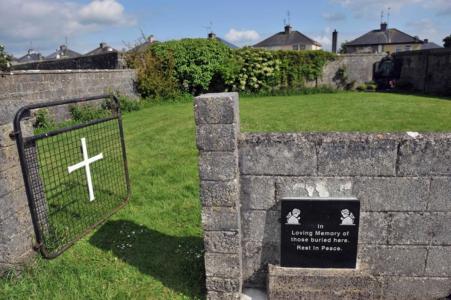We Must Discover How and Why Those Children Died
By David Quinn
It is very hard, three years after the story first broke, to write again about the Tuam mother and baby home and all the deaths that took place there in the years of its operation from 1925 to 1961. What else is left to say? I read again what I wrote at the time for this and other newspapers and it still holds up even in light of last week’s announcement that a ‘significant’ number of infant bodies have been found on the grounds of the old home. The announcement was made by the Children’s Minister. It spoke of two underground structures at the site of the old home, the first being the septic tank that dominated news reports three years ago. The second structure, the one in which a ‘significant’ number of bodies has been found, is of an undetermined nature. It is thought it might have been part of a sewage system and if it was that, it is not yet known if it was ever used as such. In an article for this newspaper that I wrote in 2014, I said (responding to the septic tank claim): “In fact, we don’t know exactly where the bodies are buried. It also appears to be the case that there is a deep burial crypt beneath the ground close to where the mother and baby home was, so perhaps they are in there.” So even three years ago, it was known that there were two structures beneath the surface at the old home. No doubt What was never in doubt is that almost 800 babies died at the home during the years in which the home was run by the Bon Secours Sisters. So, the bodies were obviously buried somewhere and the big outstanding question was, where exactly? It is probably the case that not all of them are buried in that second structure on the grounds. There is talk that some are buried under a housing estate that now sits on top of some of the old grounds of the old home. Some bodies may never be found, therefore. Three years ago, when the story first broke, the causes of death of all the babies were published. This was thanks to the work of Catherine Corless, the local historian who first uncovered the number of deaths at the home and raised questions about where the babies were buried. Measles was an incredibly common cause of death. TB was another common cause. These homes were essentially death traps. If a baby developed measles other babies would quickly contract measles also because they were all packed so close together. A dozen babies might die in the space of a fortnight. Up until the development of vaccines and antibiotics from the late 1940s on, the infant mortality rate in Ireland was incredibly high, something like 20 times higher than today. It was much higher still for the children of unmarried mothers. The Irish Times published a chart in 2014 showing that in 1925 (when the home first opened), about 50 babies out of every 1,000 died in the general population. But among the babies of unmarried mothers, it was more than 300 per 1,000, a horrifying total. What explains this? One factor is that many of these mothers came from incredibly impoverished backgrounds and were left to fend for themselves. That contributed to the death rate, which was higher in working class and poor rural areas anyway. Extreme poverty is a killer. Then, many of the babies ended up in the mother and baby homes and county homes where diseases would often run through them like a fire. So it was horrendous. Why were they buried in unmarked graves? For most of history, the dead have been buried in unmarked graves. Until the 19th Century, often only the very wealthiest could afford a plot of their own and a headstone. Unmarked graves Most of our ancestors are in unmarked graves up and down the country (it is the same all over Europe and elsewhere). Many are buried in consecrated ground in the graveyards of their local parish churches. Until several decades into the 20th Century, this is how the very poorest were still buried. This is not to excuse it. It is only to explain it. Even today there are organisations that arrange for the proper burial of people who no-one has claimed. Ireland was a desperately poor country in the past, poorer than our nearest neighbours. That explains why the infant mortality rate was higher here than in Britain, for example. In Britain, the infant mortality rate also varied by social class and Britain also had its mother and baby homes. But a big added factor was the cruel way many societies, including our own to a terrible extent, treated unmarried mothers. This affected their babies as well. Shame was used as a weapon, aided and abetted by the Churches. The advent of ‘Victorian morality’ and notions of ‘respectability’ seemed to mean that unmarried mothers were treated even more harshly than they had previously been. We had a desperate wish to be considered ‘respectable’ and we cast out those who threatened that status, or who was giving us an extra mouth to feed. The investigation into the mother and baby homes and the county homes should proceed apace. It should be objective, sober, measured and bring in international and historical comparisons where relevant. Then we should give whatever bodies we can retrieve the burial they deserve. That will go some way towards establishing a measure of justice.
|
.
Any original material on these pages is copyright © BishopAccountability.org 2004. Reproduce freely with attribution.
